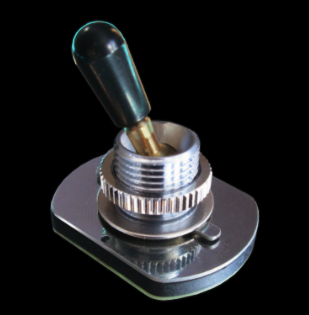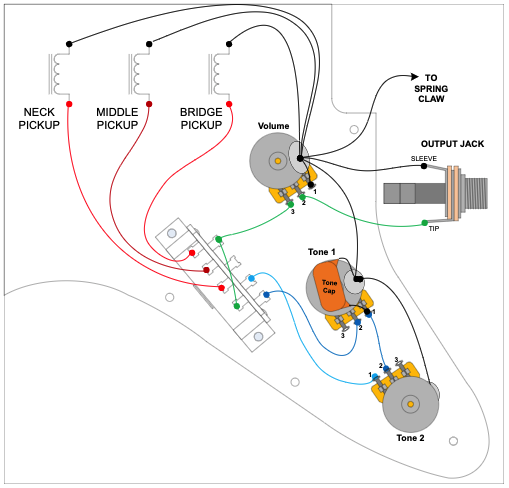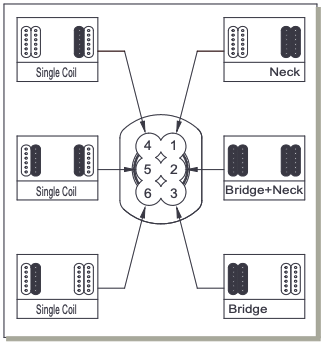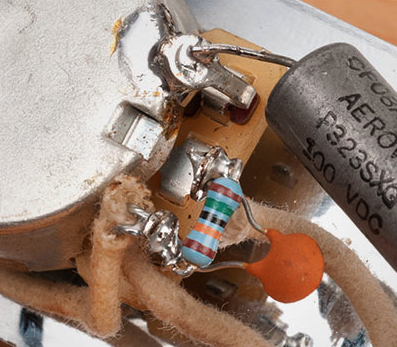
The Power In Your Hands
What are custom guitar electronics and how can you use, design or mod them?
Great guitar tone comes from many places: your fingers, your playing style, your amp, and your guitar. To me the versatility of electronic design is one of the reasons I enjoy building custom guitars. Yes tone wood and style are cool, but the electronics can give you a wide range of sounds options which allow us to fine tune your instrument for you.
I will keep this fairly high level, otherwise I might take you down a rabbit hole of too much technical jargon. I will assume you already know about the different types of pickups, as you may already have several guitars with various pickups fitted. If you want to know more about pickups, then lookout for a future article on the topic.
In this article I want to focus rather on how we use controls and electronic components to create the sound you want. What is the best circuit design is totally dependent on your taste and playing style. This is where working with your luthier comes in. They will design the guitar electronics to deliver the best sound for the options you have chosen. Below is a typical guitar electronic circuit. The pickups produce a signal which is pushed through a selector switch and onto the volume control, before going to the output jack. The tone controls change, well the tone, by modifying the signal.

The guitar electronics can be broken down into the following sections:
- Pickups
- Switching
- Potentiometers (the knob things)
- Signal altering electronics
- Output
Pickups
Variety is the spice of tone. Guitar pickups are a vital component of your tone and using high quality pickups can go a long way to bringing new life and excitement to your playing experience. There are hundreds of pickup manufacturers and thousands of pickups to choose from. Whether you are looking for a hotter pickup, trying to capture a beloved vintage tone or seeking single-coil sound in a noiseless package, brands like Fishman®, DiMarzio®, Seymour Duncan®, Lace®, Porter®, Fender®, Gibson® and many others offer a solution.
While we can include most brands of pickups specified by the client in our custom guitars, we tend to recommend hand wound pickups as they offer us the ability to fine tune the sound to compliment the design and style of the guitar.
Potentiometers
Potentiometers “pots” are used for volume and tone control in electric guitars. They allow us to alter the electrical resistance in a circuit at the turn of a knob. The type of pot used will depend on the type of circuit we are designing for. Typically audio taper pots functions on a logarithmic scale, which is the scale in which the human ear perceives sound. The perception of the sound increase will occur on a gradual scale. The linear scale will actually have a more significant sudden volume swell effect because of how the human ear perceives the scale.
Some designs will use a single volume and tone pots. In this kind of circuit one or more pickups have a single volume and tone control. Other designs incorporate two or more volume and tone pots, where each pickup has its own control pots.
Switching
Most guitars have more than one pickup and each one has unique tonal characteristics depending on its placement, construction and materials. The pickup selector switch allows the guitar player to choose between different pickups or a combination of them. The pickup placed close to the guitar neck has a warm, smooth tone with more bass content and is frequently referred to as the “rhythm” pickup, while the pickup placed close to the bridge has a sharper, biting sound with more treble content and is frequently referred to as the “lead” pickup. Of course, these are just generalisations. You might find that the neck pickup sounds sweeter for your leads or maybe you get more rhythm crunch from the bridge pickup. The subjective nature of tone is one of the main reasons it is empowering to be able to commission your own instrument.
While you may already be familiar with blade or toggle switches, we also use a new kind of switch, the 6-way toggle switch which is revolutionising guitar electronics which it versatility and simplicity.

When you first play a guitar with a 6-way toggle switch, you might not even realise it’s there – the guitar doesn’t look any different and the pickup selector feels just like a normal 3-way toggle giving Neck/Both/Bridge selections.
It’s only when you realise that the 6-way switch moves into another three forward positions that you understand what the switch is all about.

A whole new dimension in natural tone – coil tap, phase, piezo; parallel, series… you decide! Fast, intuitive switching – all in one familiar place so it’s easy to understand and use. Classic looks – completely maintains the authentic design, appearance and condition of any guitar.
Signal altering guitar electronics
I will keep this short, as it can get very technical, very quickly. Drop us an email if you want to discuss any specific electronics for a project you have in mind. The main component used to alter the tone of the guitar is a capacitor “cap”. Connected to the tone pot, the cap bleeds off certain frequencies, thus changing the tone of the output. We use different value caps depending on the pickups being used and the tone required. Typically there is one or two caps in a circuit, but we have been experimenting with a rotary switch which allows for up to six different value caps, so you can easily dial-in the tone you need without having to replace caps. Maybe not for everyone, but it will be a useful option when you need to change tone on the fly.
Another use of caps, is for the treble bleed modification which is a popular option.
Normally backing off the volume knob attenuates the pickups’ high-frequency output. It cuts more treble than bass, leaving you with bland, if not barren, tone. The remedy for this is to install a treble bleed mod. The standard practice is to solder in a cap and resistor between the pot’s input and output terminals.

It’s a shortcut for the frequencies to bypass the pot and go directly to the output. Doing this results in a lot more top end. Smoother, more organic tones.
Now the knob rolls back mainly the volume of the pickup’s bass frequencies. This brings the level down while retaining a healthy helping of treble to lend the signal more snap, clarity and pop. The sound cleans up nicely and stays fresh rather than growing stale as it gets softer.
Clearly we could go into a LOT more detail here. What is important is that we use these techniques to create the sound you’re looking for. You tell us what kind of sound you want and we design the circuitry to deliver it.
Output
There are many different types of output jacks, including mono, stereo, TRS, barrel, and power types. Ultimately they all have the same job: transfer the signal from your guitar to the instrument cable.

Almost every type of output jack used on electric guitars is referred to as “a 1/4″ jack,” but as designers we have to be more specific. Here’s a list of the most common types of 1/4″ output jacks:
Mono: Used in most acoustic and electric guitars with passive pickups.
Stereo: Used in acoustic and electric guitars with stereo outputs or active electronics.
TRS (tip-ring-sleeve): Used with active electronics, active pickup systems, or acoustic-electric guitars with two independent sound sources (such as an under-saddle transducer and onboard mic).
Power: This is usually a stereo or TRS jack attached to a preamp.
Each of these can be found in different forms, including the open or skeleton jack, the enclosed or panel jack, the barrel jack, and the flange jack. Electric guitars with passive pickups typically have open jacks.
Then there is output jack socket placement. Some are located on the side of the guitar body, while others are on the face. The great thing about commissioning a bespoke custom guitar is that you can have the output jack located just about anywhere you want.
If you have read to this point, I thank you. Even though it’s a bit of a long read, the topic of guitar electronics is immense. The good thing for you is that it is our job to design electronics specifically for your custom guitar. Do have some ideas about a different kind of guitar electrons, or a sound you would like to create, then we would love to hear from you.
